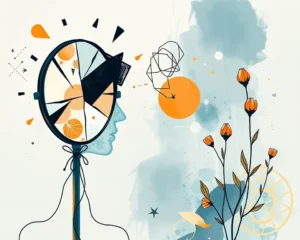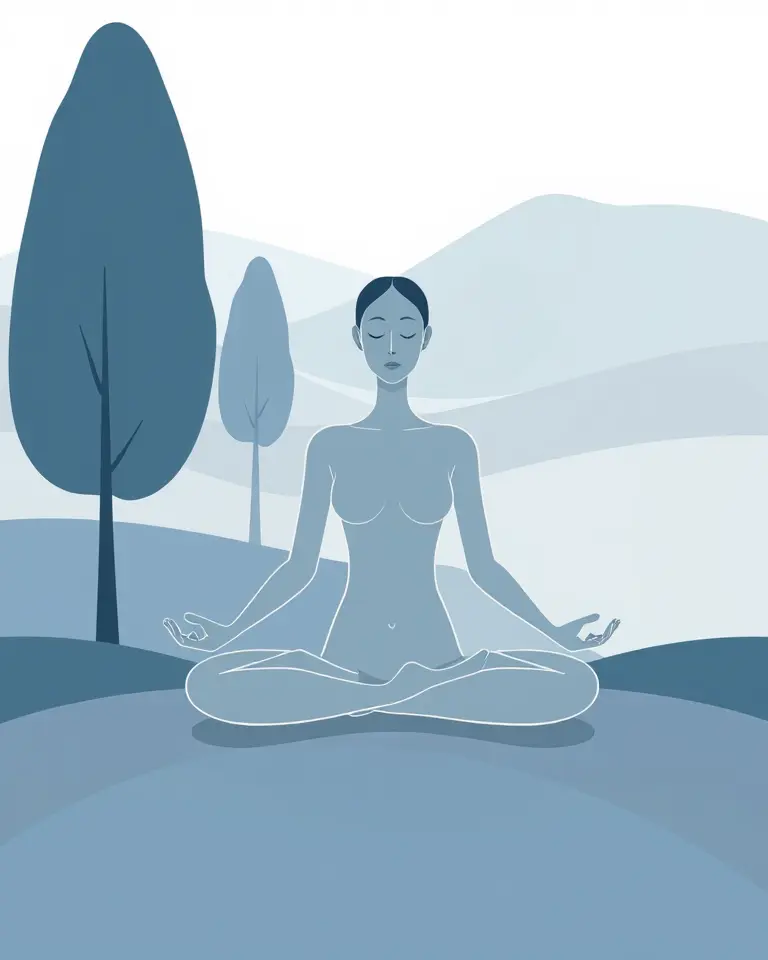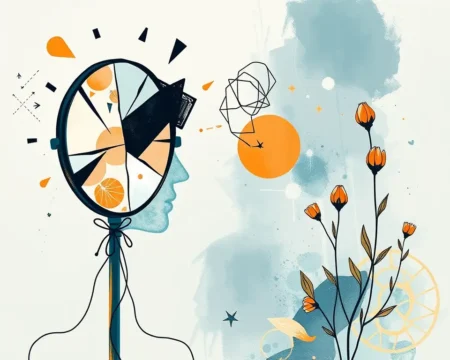As the New Year dawns, many of us feel the urge to set resolutions and strive for change. However, the pressure to achieve can often lead to stress and disappointment. This year, why not consider a different path—one that emphasizes the present moment through the practice of mindfulness? Mindfulness is not about fixing ourselves or achieving perfection; it’s about cultivating a deeper connection with ourselves, our emotions, and the world around us.
What is Mindfulness?
Mindfulness is a mental state achieved by focusing on the present moment, deliberately and without judgment. It involves paying attention to your thoughts, feelings, bodily sensations, and the surrounding environment, all without getting carried away by them. This practice encourages us to observe our experiences with curiosity and acceptance. It’s a powerful tool that can help us manage stress, improve our mental health, and enhance our overall well-being.
The Benefits of Mindfulness
The advantages of integrating mindfulness into your daily life are numerous and backed by research. Here are some of the key benefits:
- Stress Reduction: Mindfulness practice reduces activity in the amygdala, the part of the brain that triggers the stress response. By focusing on the present, we can lessen the impact of racing, unproductive thoughts that lead to stress.
- Reduced Anxiety and Depression: Studies show that mindfulness-based therapies can effectively reduce symptoms of anxiety and depression. Regular practice can create a space between stimuli and reactions, enabling thoughtful responses rather than impulsive ones.
- Improved Emotional Regulation: Mindfulness enhances emotional regulation by allowing you to respond thoughtfully to situations instead of reacting impulsively, leading to increased emotional intelligence and resilience.
- Enhanced Self-Awareness: By tuning into the present, mindfulness helps you connect with your emotions and body, fostering a deeper understanding of yourself.
- Better Focus and Concentration: Mindfulness practices improve attentional capacities, helping you to focus better and increase mental clarity.
- Improved Sleep: Mindfulness can promote relaxation, which can lead to better sleep patterns.
- Improved Physical Health: Research suggests that mindfulness may lower blood pressure, reduce chronic pain, and improve gastrointestinal difficulties, offering various physical health benefits.
- Increased Compassion: Mindfulness cultivates kindness, acceptance, and compassion towards ourselves and others.
- Reduced Rumination: Mindfulness helps decrease the tendency to ruminate by disengaging from persistent cognitive activities.
- Boosts Working Memory: Improvements in working memory have been noted as another advantage of practicing mindfulness.
- Less Emotional Reactivity: Practicing mindfulness can reduce emotional reactivity, leading to more balanced responses.
- More Cognitive Flexibility: Mindfulness can enhance cognitive flexibility, allowing for more adaptable thinking.
Getting Started with Mindfulness
Incorporating mindfulness into your life doesn’t require drastic changes. Here are some simple techniques to get started:
Mindfulness Techniques for Beginners
- Mindful Breathing: Begin by focusing on your breath as it moves in and out of your body. Sit comfortably with your back straight, feet flat on the floor, and hands in your lap. If thoughts or sensations interrupt, acknowledge them and gently return your focus to your breath.
- Body Scan Meditation: Lie on your back, legs extended, and arms at your sides. Slowly and deliberately focus your attention on each part of your body, from toe to head or vice versa. Be aware of any sensations, emotions, or thoughts that arise.
- Mindful Walking: Find a quiet place and walk slowly. Pay attention to the sensation of your feet touching the ground, the movement of your body, and the surrounding environment.
- 5-4-3-2-1 Exercise: This exercise helps bring you back to the present moment. Look around and calmly notice five things you can see, four things you can touch, three things you can hear, two things you can smell, and one thing you can taste.
- Mindful Listening: Settle into a comfortable position and tune into your body. Notice the sounds around you without labeling or judging them. As thoughts arise, observe them as you do sounds, letting them pass without interpretation.
- Observe Your Thoughts: Sit or lie down comfortably and let tension dissipate from your body. Focus on your breathing, then your body sensations, and then your thoughts. Observe your thoughts without judgment, as if they are passing clouds.
Simple Mindfulness Practices for Daily Life
- Take a Deep Breath: When feeling stressed, take a moment to pause and take a few deep breaths.
- Pay Attention: Engage your senses to truly experience your surroundings. Notice the sights, sounds, smells, tastes, and textures of your environment.
- Monotasking: Focus on one task at a time, giving it your full attention.
- Mindful Eating: Pay attention to how your food tastes, savoring each bite.
- Morning Mindfulness: Establish a morning routine that includes time to feel energized. You can try a gratitude journal, visualization, or a short meditation practice.
- Gratitude: Regularly reflect on the things you are grateful for. This can be as simple as noticing the small joys in your daily life.
- Mindful Moments: Intentionally bring your attention to the present moment. It could be while commuting, making coffee, or having a conversation.
Mindfulness Tools and Resources
There are many helpful tools and resources to support your mindfulness practice:
- Mindfulness Apps: Several apps offer guided meditations, breathing exercises, and other tools for mindfulness practice. Some popular options include:
- Calm: Offers a variety of meditations, breathing exercises, and sleep stories.
- Headspace: Provides guided meditations led by a former Buddhist monk, focusing on teaching the basics of mindfulness.
- Balance: Personalized guided meditations tailored to your needs.
- Insight Timer: Provides a vast library of free guided meditations, music tracks, and talks from experts.
- Happier Meditation: An app that adapts to your needs with monthly check-ins, helping you manage stress and improve sleep.
- Mindfulness Journals and Planners: These tools can help you track your thoughts, feelings, and experiences. They often include prompts for reflection, gratitude exercises, and intention-setting. Some options include:
- The Five Minute Journal: A daily gratitude journal for happiness, mindfulness, and reflection.
- Be Rooted Planner: An undated wellness planner for dedicated mindfulness.
- Nook Theory Mindfulness Planner: A planner designed to align your goals, tasks, and reflections seamlessly.
- Intelligent Change Gratitude Journals: Guided journals crafted for mindfulness.
- Audio Resources: Many websites and apps offer free guided meditations, breathing exercises, and relaxation audio clips.
- Mindfulness Retreats: Consider attending a mindfulness retreat to immerse yourself in the practice and connect with others. Retreats can be found worldwide and often include yoga, meditation, and nature activities.
Using Mindfulness to Achieve New Year Goals
Mindfulness isn’t just a tool for stress reduction; it can also help you achieve your New Year goals. By focusing on the present, you can approach your goals with greater clarity and intention. Rather than feeling overwhelmed, break down large goals into smaller, manageable steps and use mindfulness to stay grounded and motivated. Observe, describe, and participate in each step without judgment, while being mindful of your feelings and limitations along the way.
A Mindful New Year
As you embark on the New Year, consider embracing mindfulness as a guiding principle. By taking the time to be present, you can reduce stress, improve your well-being, and experience the richness of each moment. Whether you choose a structured meditation practice, or simply integrate mindful moments into your daily routine, the benefits will be profound. This year, let’s focus on being, rather than just doing, and find peace in the present moment.










